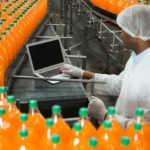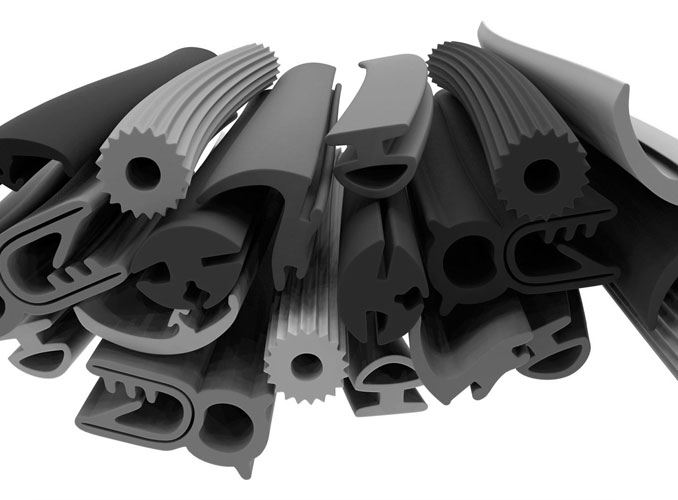The rubber manufacturing industry, pivotal for producing a wide range of products from automotive tires to medical devices, is undergoing a significant transformation thanks to industrial automation. As manufacturers strive to enhance efficiency, reduce waste, and meet increasingly stringent quality standards, the integration of advanced technologies such as servo controllers has become crucial. These innovations not only streamline operations but also ensure precision and repeatability, which are vital in rubber manufacturing processes. This article explores the role of industrial automation in the rubber industry, highlighting the impact of servo controllers on various manufacturing processes.
The Importance of Automation in Rubber Manufacturing
Rubber manufacturing involves several complex processes, including mixing, molding, extrusion, and curing. Each of these steps requires precise control over numerous variables to ensure the quality and consistency of the final products. Manual operations in such environments are not only inefficient but also prone to errors and inconsistencies, leading to higher material waste and variable product quality.
Industrial automation introduces several key advantages:
- Enhanced Precision and Consistency: Automated machinery, driven by sophisticated control systems like servo controllers, delivers products with consistent quality by precisely controlling processing parameters.
- Increased Production Efficiency: Automation allows for continuous operation and faster processing times, significantly boosting output compared to manual methods.
- Improved Worker Safety: Automated systems minimize the need for direct human interaction with potentially hazardous materials and machinery, thus reducing workplace accidents.
- Cost Efficiency: While the initial setup costs for automated systems are substantial, the long-term benefits include reduced labor costs, lower waste levels, and increased throughput.
Key Applications of Industrial Automation in Rubber Manufacturing
1. Compounding and Mixing
- The initial step in rubber manufacturing involves the blending of raw rubber with chemicals and fillers to create various compounds. Automated mixing systems, controlled by servo controllers, ensure that ingredients are combined in precise proportions and mixed uniformly. This automation is crucial for achieving the desired material properties in the final product.
2. Molding and Extrusion
- Rubber products are shaped through processes like injection molding and extrusion. Servo controllers play a vital role here by regulating the movements of machinery with high precision. For example, in injection molding, the servo controller adjusts the speed and pressure of the injection to ensure that the mold is filled correctly without any material wastage or defects.
3. Curing and Vulcanization
- Curing or vulcanization is a chemical process that gives rubber its final properties, such as elasticity and durability. Automated curing presses use servo controllers to maintain exact temperatures and pressure levels throughout the curing cycle, essential for ensuring consistent product quality.
4. Cutting and Finishing
- After curing, rubber products often require precise cutting and finishing to meet specific dimensions and tolerances. Automated cutting machines equipped with servo controllers execute these tasks with high accuracy, optimizing material usage and reducing the need for rework.
The Role of Servo Controllers in Enhancing Automation
Servo controllers are integral to the automation of rubber manufacturing. These devices precisely control the motion of servo motors that drive most of the automated machinery used in the industry. The ability of servo controllers to adjust motor speed, position, and torque in real-time is particularly beneficial in processes that require high precision, such as the extrusion of complex profiles or the injection molding of intricate parts.
- Precision Control: Servo controllers provide the fine control needed for processes where the exact amount, speed, and placement of material are critical to product quality.
- Flexibility: These controllers allow for quick adjustments to production settings, enabling manufacturers to easily switch between different types of rubber compounds or product designs without extensive downtime.
- Efficiency: By optimizing the movement of machinery, servo controllers reduce cycle times and energy consumption, contributing to more efficient production processes.
Challenges in Automating Rubber Manufacturing
Despite the benefits, automating rubber manufacturing processes presents several challenges:
- High Initial Costs: The cost of high-precision automation equipment, including sophisticated servo controllers and related machinery, can be significant.
- Technical Complexity: Developing and maintaining advanced automated systems requires a high level of technical expertise, and manufacturers must invest in skilled personnel to operate and service these systems.
- Integration with Legacy Systems: Many rubber manufacturers operate older equipment that may not be easily compatible with modern automation solutions, requiring customized integration efforts.
Future Outlook
As technology continues to advance, the role of automation in rubber manufacturing is expected to grow. Emerging technologies like artificial intelligence and the Internet of Things (IoT) are likely to further enhance the capabilities of automated systems, enabling even greater precision, adaptability, and efficiency. These advancements could lead to smarter production lines that adjust processing parameters in real-time based on sensor data, improving product quality and reducing waste even further.
Conclusion
Industrial automation, particularly through the use of advanced servo controllers such as the DKC04.3-100-7-FW, is transforming the rubber manufacturing industry. By enhancing precision, efficiency, and safety, automation helps manufacturers meet the challenges of modern production demands. As the industry continues to innovate, embracing these advanced technologies will be crucial for staying competitive in a global market and ensuring the highest standards of product quality and manufacturing efficiency.












